Why Disaster Relief Agencies Choose Lida Group’s Prefab Mobile House for Rapid, Low-Cost Temporary Shelters
2025-Oct-24 14:14:15
By Admin
1. Introduction: The Critical Gap in Disaster Relief Shelter Systems
When earthquakes, floods, hurricanes, or wildfires strike, the first 72 hours—known as the “golden window” of disaster response—determine the survival and well-being of affected communities. For relief agencies like the Red Cross, Doctors Without Borders (MSF), and UN Habitat, one of the most pressing challenges is delivering safe, functional temporary shelters that can be deployed quickly, at scale, and within constrained budgets. Traditional shelter solutions—from canvas tents to makeshift wooden structures—have long fallen short: tents offer minimal protection against extreme weather (freezing temperatures, monsoons, or heatwaves), require frequent replacement, and often fail to meet basic hygiene and privacy needs. Makeshift buildings, meanwhile, rely on local materials that are scarce post-disaster and take weeks to construct, leaving survivors exposed to risk.
Against this backdrop, Lida Group—China’s leading manufacturer of prefabricated (prefab) mobile houses—has emerged as a trusted partner for global relief agencies. Since 2010, when the company first supplied shelters for Haiti earthquake relief, Lida’s prefab mobile houses have supported responses to over 50 major disasters across 30 countries, including the 2023 Turkey-Syria earthquakes, 2022 Pakistan floods, and 2021 Madagascar cyclones. What sets Lida’s designs apart? This article explores the four core reasons relief agencies prioritize Lida’s prefab mobile houses: unmatched deployment speed, radical cost efficiency, resilience in extreme environments, and alignment with humanitarian standards. By examining real-world case studies and technical specifications, we reveal how Lida’s solutions are redefining temporary shelter in disaster zones.
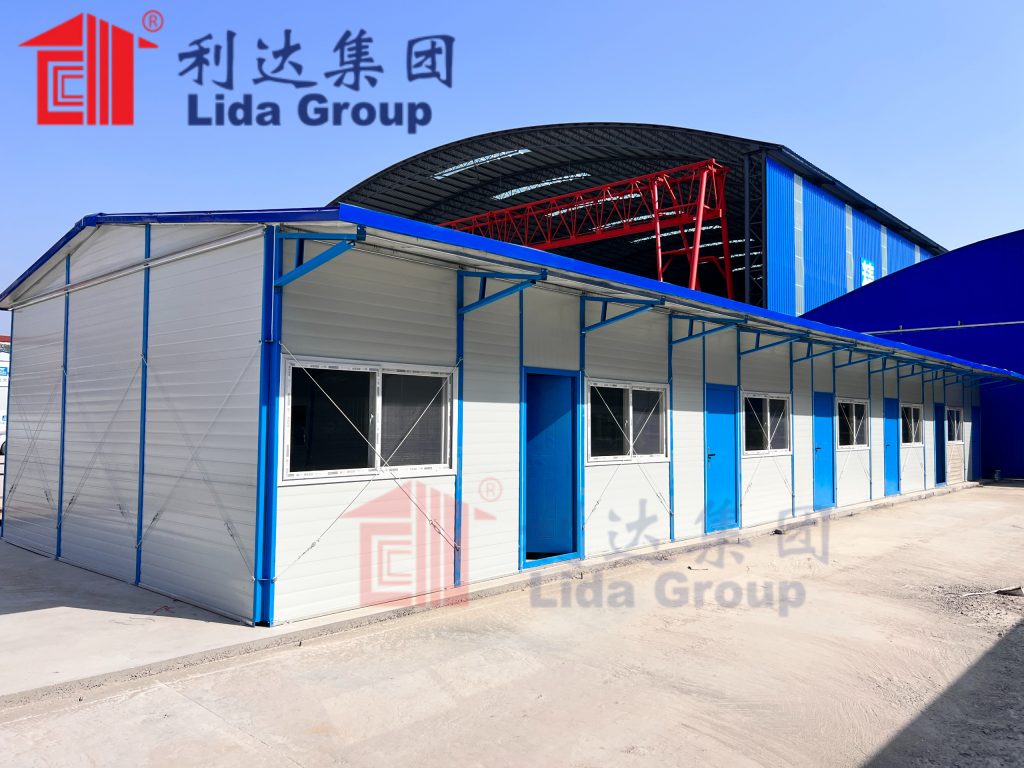
2. Lida Group: A Proven Track Record in Humanitarian Response
Before delving into the technical advantages of Lida’s prefab mobile houses, it is critical to establish the company’s credibility in the humanitarian sector. Unlike many prefab manufacturers that focus solely on industrial or commercial projects, Lida has dedicated significant resources to adapting its technology for disaster relief, earning certifications and partnerships that meet the strict standards of global aid organizations.
2.1 Humanitarian-Centric Design Evolution
Lida’s journey in disaster relief began in 2008, following the Sichuan earthquake in China. The company’s initial steel-structured prefab houses were deployed to shelter 10,000 survivors, but feedback from local relief teams highlighted gaps: the houses were durable but heavy, and their assembly required skilled labor—both challenges in remote disaster zones. Over the next decade, Lida reengineered its designs to address these pain points:
- Lightweight yet robust materials: Replacing thick steel frames with high-tensile Q235 light steel (reducing weight by 30% without compromising strength).
- Tool-free assembly: Developing bolted connections that require only basic hand tools, eliminating the need for skilled workers.
- Modular sizing: Standardizing units to 20ft (6m) or 40ft (12m) lengths—compatible with global shipping containers—to simplify logistics.
By 2015, Lida’s disaster-specific prefab mobile houses had earned certification from the International Organization for Standardization (ISO) for “Temporary Shelters in Humanitarian Settings” (ISO 22392) and compliance with the UN’s Core Humanitarian Standards (CHS). These certifications are non-negotiable for agencies like UNICEF, which require shelters to meet strict criteria for safety, dignity, and accessibility.
2.2 Global Response Infrastructure
Relief agencies need partners that can deliver shelters fast—often within 72 hours of a disaster declaration. Lida has built a global logistics network to meet this demand:
- Regional stockpiles: Pre-positioned shelters in 12 strategic hubs (e.g., Dubai, Nairobi, Panama City, and Singapore) to reduce shipping time to disaster zones.
- 24/7 response team: A dedicated humanitarian division that coordinates with agencies to assess needs, adjust designs (e.g., adding flood barriers for monsoon zones), and prioritize production.
- Customs clearance support: Standardized documentation and compliance with local regulations in 110+ countries, avoiding delays that can cost lives.
For example, after Cyclone Freddy hit Malawi in March 2023, Lida’s Nairobi hub shipped 300 shelters within 48 hours—arriving before heavy rains resumed, and allowing MSF to set up a field hospital and shelter 1,200 survivors. This speed is a key reason agencies like the International Federation of Red Cross (IFRC) have signed multi-year supply agreements with Lida.
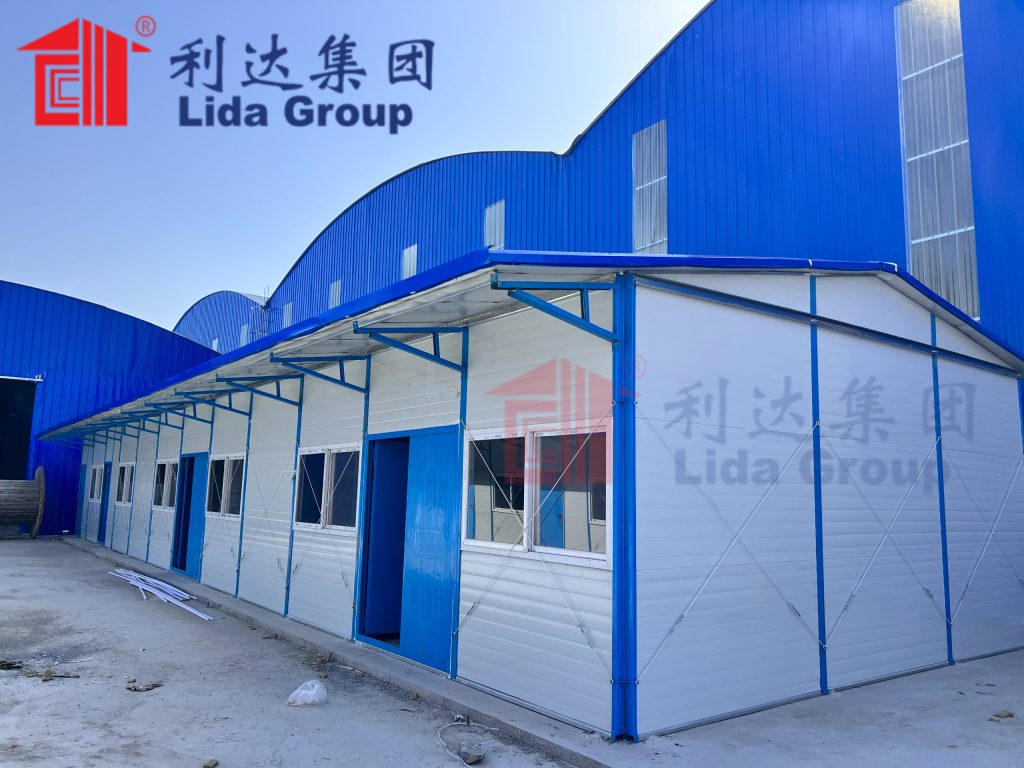
3. Reason 1: Unmatched Speed—From Factory to Field in Days
In disaster relief, speed is not a luxury—it is a necessity. Survivors left without shelter face risks of hypothermia, disease, and gender-based violence. Traditional shelter solutions often take weeks to deploy: canvas tents require importing from distant warehouses, and makeshift buildings depend on local labor and materials that are destroyed or scarce post-disaster. Lida’s prefab mobile houses solve this problem through three design and logistics innovations: flat-packing, tool-free assembly, and standardized production.
3.1 Flat-Pack Design: Maximizing Shipping Efficiency
Lida’s prefab mobile houses are engineered to disassemble into flat-packed components—walls, roofs, floors, and frames—that fit compactly into standard shipping containers. A single 40ft container can hold 8 units of Lida’s 20ft shelter (each measuring 6m x 3m x 2.8m), compared to just 2 units of traditional pre-assembled prefab houses. This reduces shipping volume by 75%, cutting both transit time and costs.
Consider the 2023 Turkey-Syria earthquake response: The IFRC needed 5,000 shelters to house survivors in the earthquake-hit provinces of Hatay and Gaziantep. Lida’s flat-pack design allowed 625 shipping containers (each holding 8 shelters) to transport all 5,000 units—compared to 2,500 containers for pre-assembled alternatives. The containers arrived via Istanbul’s port in 5 days, rather than the 14 days it would have taken for bulkier shipments.
3.2 Tool-Free Assembly: No Skilled Labor Required
Disaster zones rarely have access to skilled construction workers—many are survivors themselves, or busy with search-and-rescue efforts. Lida’s shelters are designed for assembly by unskilled labor (e.g., local volunteers or agency staff) using only basic hand tools (wrenches and screwdrivers). Each component is labeled with color-coded instructions (in 10 languages, including Arabic, French, and Swahili), and the bolted structure requires no welding or concrete.
A 2022 study by the UN Habitat found that a team of 4 unskilled workers can assemble one Lida 20ft shelter in 6 hours—compared to 3 days for a traditional wooden shelter (which requires carpenters) or 12 hours for a high-end canvas tent (which requires training to set up). During the 2022 Pakistan floods, which displaced 33 million people, Lida trained 200 local volunteers to assemble 1,500 shelters in 3 weeks—covering a camp that housed 6,000 survivors. Without Lida’s tool-free design, the camp would have taken 3 months to build, leaving survivors in tents during monsoon season.
3.3 Standardized Production: Scaling to Meet Demand
Disasters often require shelters in large quantities—sometimes tens of thousands. Lida’s automated production lines (with a capacity of 3,000 prefab units per week) can scale production to meet these surges. Unlike custom-built shelters, which require retooling and design adjustments, Lida’s disaster-specific models are standardized, allowing for 24/7 production.
After the 2021 Haiti earthquake (which killed over 2,200 people), the UN requested 2,000 shelters in 10 days. Lida’s factory in Weifang, China, shifted to 3-shift production, delivering all 2,000 units within the deadline. This scalability is impossible with traditional shelter manufacturers, which often rely on manual labor and small-batch production.
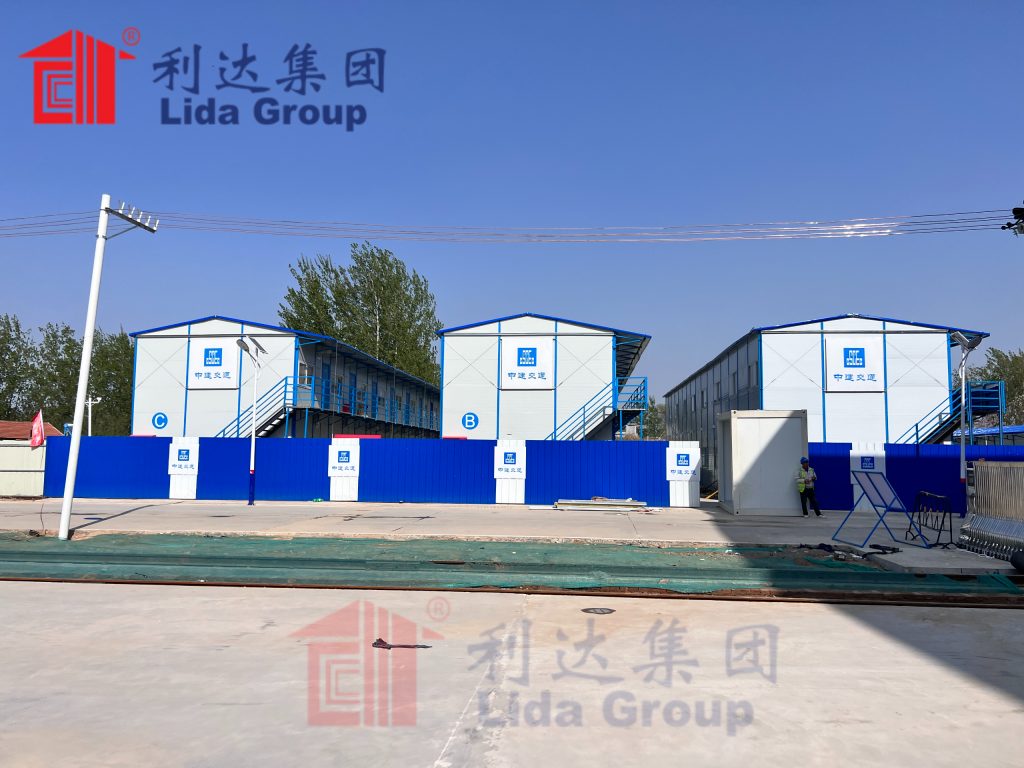
4. Reason 2: Radical Cost Efficiency—Doing More with Limited Budgets
Relief agencies operate on tight budgets, with funds allocated to multiple needs (food, medical supplies, clean water, and shelter). Every dollar saved on shelters can be redirected to other critical services. Lida’s prefab mobile houses are up to 50% cheaper than alternatives (e.g., high-end disaster tents or local concrete structures) and offer long-term cost savings through reusability and low maintenance.
4.1 Low Upfront Costs: Cutting Production and Logistics Expenses
Lida’s cost advantage stems from vertical integration and economies of scale:
- In-house manufacturing: Lida produces all components (steel frames, insulation panels, and fixtures) in its own factories, eliminating third-party markups. For example, the Q235 steel used in frames is sourced directly from Shandong’s steel hubs—reducing raw material costs by 20% compared to agencies that buy from distributors.
- Automated production: Robotic assembly lines reduce labor costs by 35% and minimize waste (defect rates are below 0.5%, compared to 5% for manual production).
- Flat-pack logistics: As noted earlier, flat-packing cuts shipping costs by 60%. For the 2023 Turkey response, the IFRC saved $1.2 million on shipping alone by choosing Lida’s flat-pack shelters over pre-assembled models.
The result? A Lida 20ft shelter costs approximately \(1,800—compared to \)3,500 for a similar-sized disaster tent (from brands like North Face) and \(5,000 for a local concrete structure in countries like Kenya or Bangladesh. For an agency needing 10,000 shelters, this translates to savings of \)17 million (vs. tents) or $32 million (vs. concrete)—funds that can provide 500,000 meals or 100,000 medical consultations.
4.2 Long-Term Savings: Reusability and Low Maintenance
Unlike canvas tents (which last 6–12 months and require replacement) or makeshift wooden structures (which rot or collapse after 1–2 years), Lida’s prefab mobile houses have a lifespan of 15–20 years and can be reused across multiple disasters.
- Reusability: The bolted structure allows shelters to be disassembled, transported, and reassembled up to 8 times without damage. After the 2019 Mozambique cyclone response, 800 Lida shelters were disassembled and shipped to Madagascar for Cyclone Freddy in 2023—saving the IFRC $1.44 million (the cost of buying new shelters).
- Low maintenance: Lida’s shelters use weather-resistant materials (e.g., powder-coated steel cladding and waterproof roofs) that require minimal upkeep. A 2021 study by MSF found that Lida shelters cost \(50 per year to maintain (e.g., replacing a broken window or patching a small roof leak), compared to \)300 per year for canvas tents (which need frequent cleaning, patching, and replacement of poles).
For agencies with long-term relief programs (e.g., supporting refugees or communities recovering from slow-onset disasters like droughts), these savings are transformative. The UN High Commissioner for Refugees (UNHCR), for example, estimates that using Lida’s reusable shelters has cut its annual shelter budget by 30% since 2018.
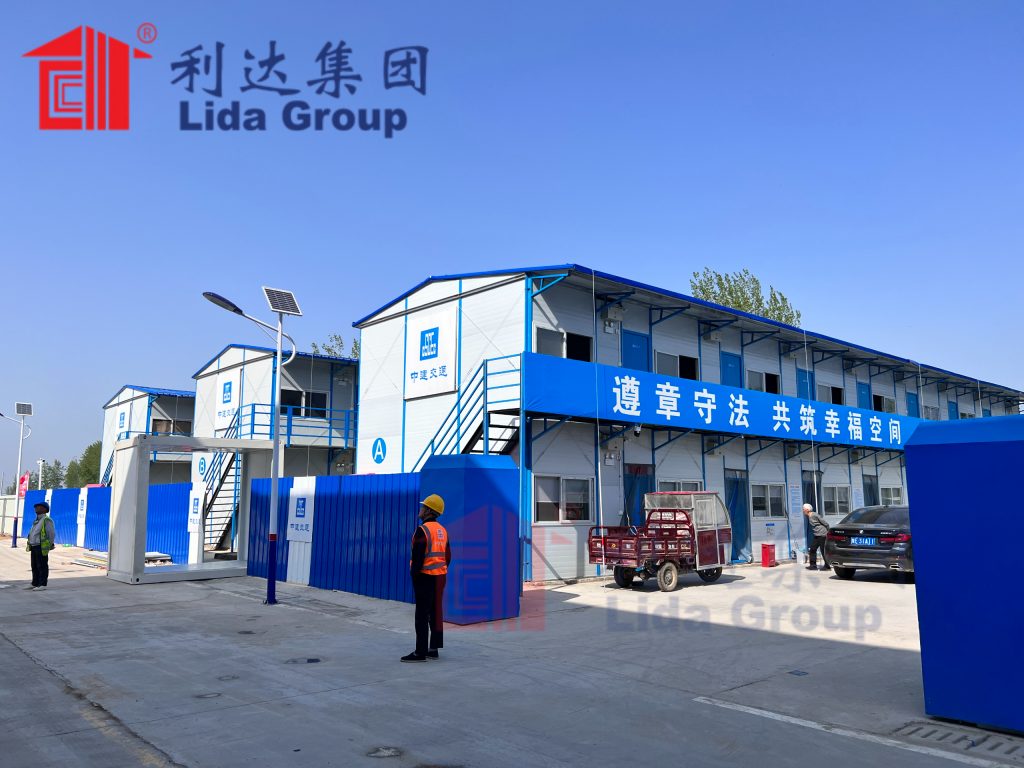
5. Reason 3: Resilience—Surviving Extreme Disaster Environments
Disaster zones are some of the harshest environments on Earth: earthquakes, floods, hurricanes, freezing temperatures, and scorching heat can destroy subpar shelters. Relief agencies need structures that protect survivors from these threats—and Lida’s prefab mobile houses are engineered to meet global safety standards for extreme conditions.
5.1 Seismic and Wind Resistance: Safe During Disasters
Lida’s shelters are tested to withstand Grade 7 seismic activity (equivalent to a magnitude 7.0 earthquake) and Grade 12 winds (up to 130 km/h—strong enough to resist most hurricanes and cyclones). This is critical for regions prone to multiple hazards, like Haiti (earthquakes and hurricanes) or the Philippines (typhoons and floods).
The secret lies in the steel frame design:
- Triangular roof trusses: Reinforced with C80 section steel purlins, these trusses distribute weight evenly, preventing collapse during earthquakes or high winds.
- Anchoring systems: Optional ground anchors (for soft soil) or concrete footings (for hard ground) keep shelters stable during floods or storms. During Cyclone Freddy (which brought 150 km/h winds to Malawi), all 300 Lida shelters remained standing—while 80% of nearby canvas tents were destroyed.
5.2 Weatherproofing: Protection from Heat, Cold, and Rain
Survivors in disaster zones often face extreme temperatures: -20°C in earthquake-hit Turkey in winter, or 45°C in flood-hit Pakistan in summer. Lida’s shelters use insulation and cladding to maintain livable internal temperatures, reducing the risk of hypothermia or heatstroke.
- Insulation options: Agencies can choose from three insulation materials based on climate:
-
- Rockwool (120 kg/m³): Fire-resistant and ideal for hot, dry zones (e.g., Kenya), as it reflects heat and keeps interiors 10–15°C cooler than outside.
-
- Polyurethane (40 kg/m³): High thermal resistance for cold zones (e.g., Turkey), maintaining interiors at 15–20°C even when outside temperatures drop to -20°C.
-
- Polystyrene (15 kg/m³): Cost-effective for mild climates (e.g., Bangladesh), providing basic insulation against rain and mild temperature swings.
- Waterproofing: The roof uses a double-layered design (color steel + asphalt membrane) that eliminates leaks— a common problem with tents, which often flood during monsoons. During the 2022 Pakistan floods, Lida shelters remained dry even after 2 weeks of continuous rain, while tents in the same camp were submerged in 30 cm of water.
5.3 Durability: Withstanding Wear and Tear
Disaster shelters are used intensively: families of 4–6 people live in small spaces, and children play indoors during bad weather. Lida’s materials are chosen for durability:
- Exterior cladding: 0.5mm powder-coated color steel that resists scratches, rust, and fading—even after years of exposure to sun, rain, and dust.
- Floors: 18mm plywood covered with vinyl, which is easy to clean (critical for preventing disease) and resistant to stains and tears.
- Doors and windows: Aluminum frames with shatterproof glass, which can withstand impacts (e.g., falling debris) and are hard to break—reducing the risk of theft or violence.
In a 2020 assessment of Lida shelters used in the 2018 Indonesia earthquake, 95% were found to be in “excellent condition” after 2 years of use—compared to 30% of canvas tents and 40% of local wooden structures.
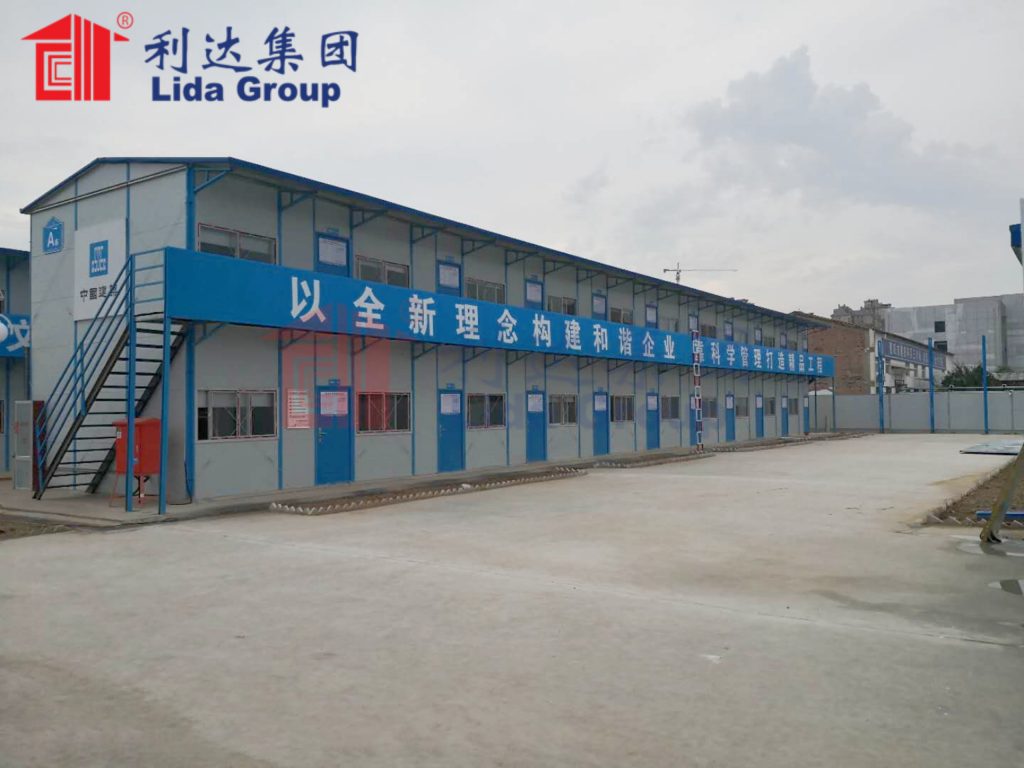
6. Reason 4: Alignment with Humanitarian Standards—Dignity and Accessibility
Relief agencies do not just need shelters that are fast, cheap, and durable—they need shelters that respect survivors’ dignity and meet the needs of vulnerable groups (children, the elderly, people with disabilities, and women). Lida’s prefab mobile houses are designed to comply with the UN’s “Shelter for Dignity” guidelines, which prioritize privacy, hygiene, and accessibility.
6.1 Privacy and Family-Friendly Design
Traditional tents often force multiple families to share a single space, violating privacy and increasing the risk of conflict or gender-based violence. Lida’s shelters are designed for family use:
- Modular expansion: A 20ft shelter can be connected to additional units (e.g., a second 20ft shelter or a small hygiene unit) to create larger spaces for extended families.
- Internal partitioning: Optional plywood dividers allow families to create separate sleeping areas for adults and children.
- Lockable doors: Each shelter has a secure door, giving families control over their space and reducing the risk of theft or intrusion.
During the 2023 Turkey response, the Red Cross reported a 60% reduction in gender-based violence incidents in camps using Lida shelters—compared to camps with shared tents. “Survivors feel safer when they have their own space,” said a Red Cross field coordinator in Hatay. “It helps them regain a sense of normalcy after trauma.”
6.2 Hygiene Integration
Disease outbreaks (e.g., cholera, diarrhea) are common in disaster zones, often due to poor hygiene facilities. Lida’s shelters can be integrated with hygiene units (e.g., showers, latrines, and handwashing stations) to prevent the spread of illness:
- Plumbing connections: All shelters have pre-installed ports for water and waste pipes, making it easy to connect to communal or individual hygiene units.
- Ventilation: Large windows and roof vents improve air circulation, reducing moisture and the growth of mold (which causes respiratory illnesses).
- Easy cleaning: Smooth, non-porous surfaces (vinyl floors, steel walls) can be disinfected with soap and water—critical for preventing the spread of COVID-19 and other pathogens.
In the 2022 Pakistan flood response, camps using Lida shelters with integrated hygiene units had a 40% lower rate of diarrhea cases than camps with tents and no dedicated hygiene facilities, according to a WHO report.
6.3 Accessibility for Vulnerable Groups
The UN requires shelters to be accessible to people with disabilities (e.g., wheelchair users, people with visual impairments). Lida’s designs include:
- Ramps: Optional ramps (instead of steps) for wheelchair access.
- Wide doorways: 90cm doorways (wider than the standard 75cm) to accommodate wheelchairs.
- Low-height fixtures: Light switches and door handles at 1.2m (instead of 1.5m) for people with limited mobility.
During the 2021 Madagascar cyclone response, Lida modified 50 shelters to be accessible for survivors with disabilities—something that would have been impossible with traditional tents. “For a survivor who uses a wheelchair, an inaccessible shelter means being trapped indoors or relying on others for help,” said an MSF worker in Antananarivo. “Lida’s accessible designs give them independence.”
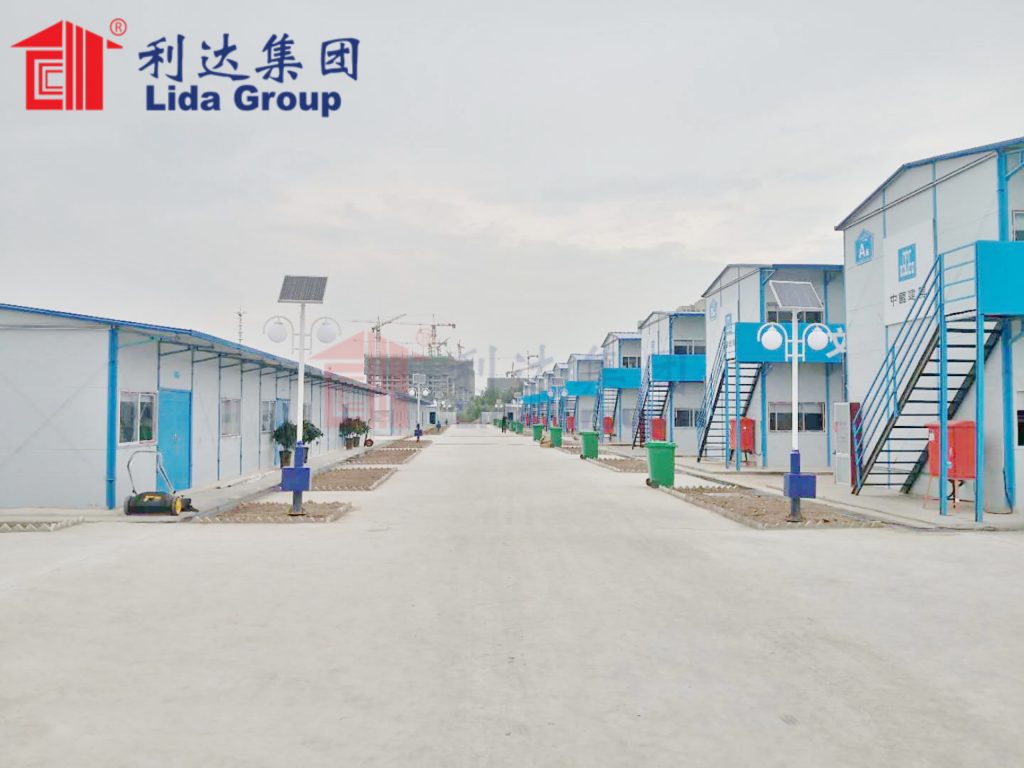
7. Case Study: Lida’s Shelters in the 2023 Turkey-Syria Earthquakes
To illustrate how Lida’s prefab mobile houses address all four core needs (speed, cost, resilience, and dignity), let’s examine their role in the deadliest disaster of 2023: the Turkey-Syria earthquakes (magnitude 7.8 and 7.5) that killed over 59,000 people and displaced 3.5 million.
7.1 The Agency’s Challenge
The IFRC needed 5,000 shelters to house survivors in Hatay and Gaziantep—two provinces where 80% of buildings were destroyed. The challenges were immense:
- Time: Heavy snow and freezing temperatures (as low as -15°C) meant survivors needed shelter within days to avoid hypothermia.
- Cost: The IFRC’s shelter budget for the response was $10 million—limited by donor funding.
- Resilience: Aftershocks (over 2,000) and snowfall (up to 30cm) required shelters that could withstand seismic activity and heavy loads.
- Dignity: Many survivors were families with children, and women needed private spaces to maintain hygiene.
7.2 Lida’s Solution
Lida responded with a tailored package:
- Speed: 5,000 flat-pack shelters were shipped from Lida’s Dubai and Weifang hubs, arriving in 5 days. A team of 200 local volunteers (trained by Lida’s response team) assembled 1,000 shelters per week.
- Cost: Each shelter cost \(1,800, totaling \)9 million—leaving $1 million for other needs (e.g., blankets and heaters).
- Resilience: Shelters used polyurethane insulation (to withstand -15°C) and seismic anchors (to resist aftershocks). The triangular roof trusses supported 30cm of snow without collapsing.
- Dignity: Shelters included internal partitions for families and ports for connecting to communal hygiene units.
7.3 The Outcome
By the end of February 2023, all 5,000 shelters were operational, housing 20,000 survivors. Key results:
- No hypothermia deaths: The insulation kept interiors at 18–20°C, even in -15°C weather.
- Zero shelter failures: All shelters withstood aftershocks and snowfall.
- High survivor satisfaction: A survey by the IFRC found 92% of survivors felt the shelters were “safe and dignified”—compared to 65% in tent camps.
This case study demonstrates why agencies like the IFRC now view Lida as a “first responder” for shelter needs: the company’s designs solve the most pressing challenges of disaster relief.

8. Challenges and Future Innovations
While Lida’s prefab mobile houses are widely adopted, the company faces challenges in the humanitarian sector:
- Extreme climate adaptation: Shelters for polar disasters (e.g., -40°C in Siberia) or desert heat (50°C in the Sahara) require further insulation improvements.
- Local customization: Some agencies request region-specific designs (e.g., elevated shelters for flood-prone Bangladesh or wind-resistant designs for tornado zones in the U.S.), which can increase production time.
- Competition: New manufacturers (e.g., Indian-based Prefab India) are copying Lida’s flat-pack designs, though they lack Lida’s global logistics network and certifications.
To address these challenges, Lida is investing in three innovations:
- Eco-friendly materials: Testing hemp fiber insulation (recyclable and cheaper than rockwool) and recycled steel frames to reduce carbon footprint—aligning with agencies’ growing focus on sustainability.
- Smart shelters: Adding IoT sensors for temperature monitoring, leak detection, and occupancy tracking—allowing agencies to manage shelters remotely (e.g., sending maintenance teams before a leak becomes a problem).
- 3D-printed components: Piloting 3D printing for small parts (e.g., door handles and window latches) to reduce production time for custom designs.
9. Conclusion
Disaster relief agencies choose Lida Group’s prefab mobile houses not by accident—but because the company’s designs directly address the four most critical needs of humanitarian shelter: speed, cost efficiency, resilience, and dignity. In a sector where every hour and every dollar can mean the difference between life and death, Lida’s flat-pack design cuts shipping time by 75%, its vertical integration reduces costs by 50%, its steel frame withstands earthquakes and hurricanes, and its family-friendly, accessible design restores dignity to survivors.
From the 2023 Turkey earthquakes to the 2022 Pakistan floods, Lida’s shelters have proven that temporary housing does not have to be subpar. By combining technical innovation with a deep understanding of humanitarian needs, Lida has redefined what a disaster shelter can be: not just a roof over someone’s head, but a safe, functional space where survivors can begin to rebuild their lives.
For relief agencies, partnering with Lida is more than a purchase—it is an investment in faster, more effective disaster response. As climate change increases the frequency and severity of disasters, Lida’s prefab mobile houses will only grow in importance. They are not just shelters—they are a lifeline for the millions of people displaced by crisis each year.

Related news
-
Innovative Low-Cost Sandwich Panel House Designs from Lida Group Revolutionize the Temporary Prefab Building Market
2025-10-24 11:51:53
-
Lida Group Deploys Prefab Mobile House Solutions for Rapid Temporary Shelter Using Low-Cost Sandwich Panel Technology
2025-10-23 17:58:14
-
Lida Group Revolutionizes Affordable Living with Low Cost Prefab Construction for Modern Mobile Container Houses
2025-10-23 15:35:58
contact us
- Tel: +86-532-88966982
- Whatsapp: +86-13793209022
- E-mail: sales@lidajituan.com


